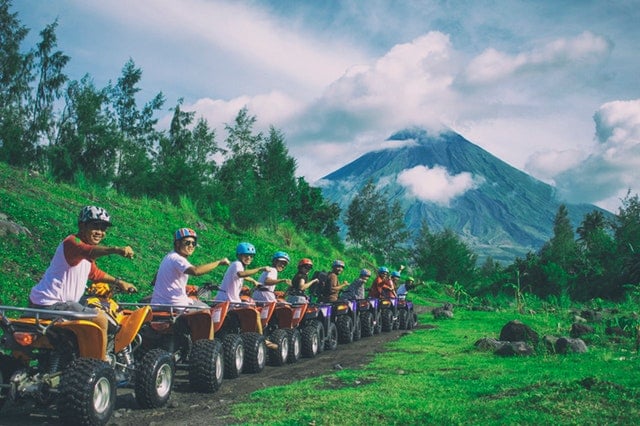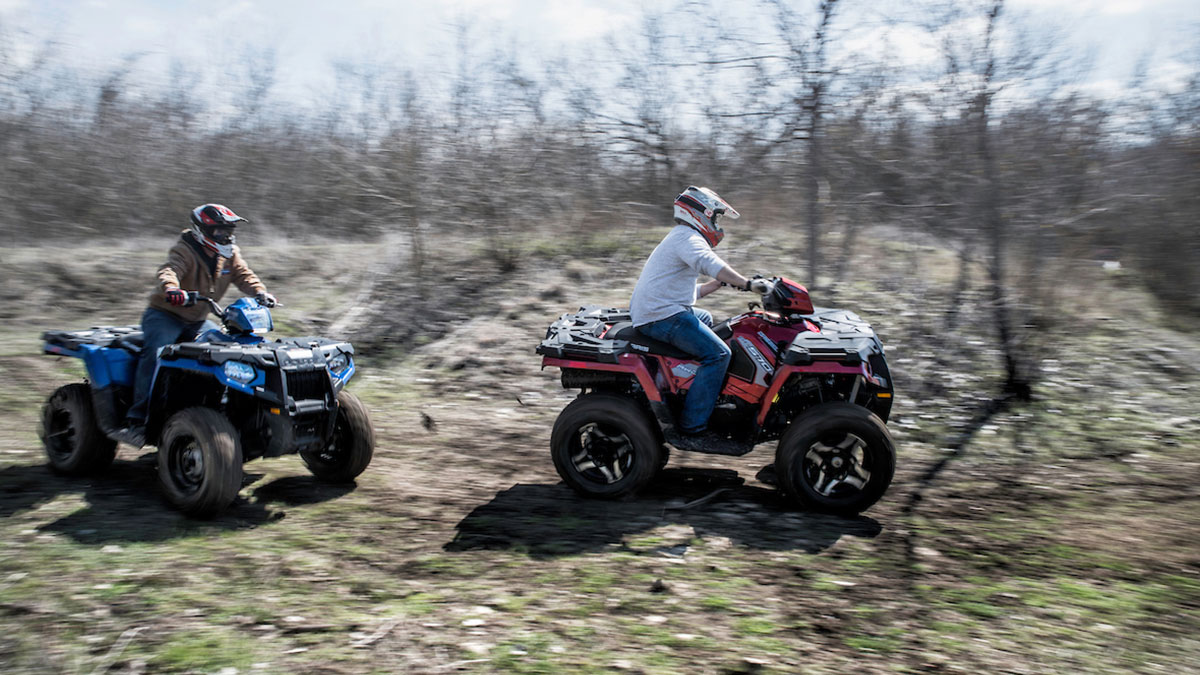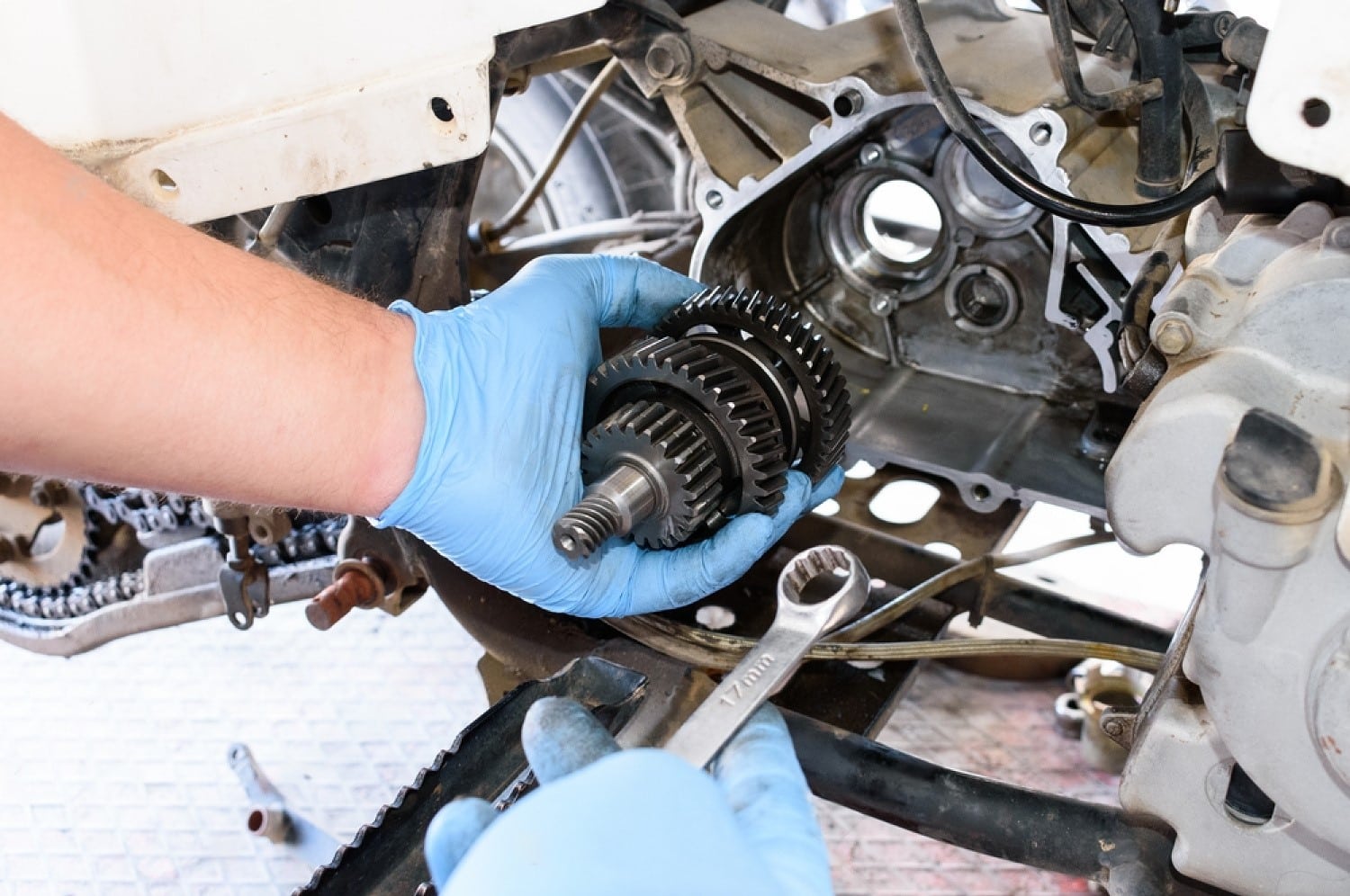ATV Adventure: Conquering Trails and Accepting the Off-Road Spirit
ATV Adventure: Conquering Trails and Accepting the Off-Road Spirit
Blog Article
ATV Riding Strategies: Grasping the Art of Off-Roading

Body Positioning
To effectively navigate via challenging off-road surface, it is vital for ATV motorcyclists to continually maintain correct body positioning. Keeping the appropriate body placement while riding an ATV not just improves control and stability yet likewise guarantees the rider's security. By embracing the proper body positioning strategies, bikers can properly distribute their weight, enhance their equilibrium, and reduce the danger of accidents or injuries.
One secret element of correct body placing is keeping the feet on the foot pegs. Placing the feet on the foot secures enables the motorcyclist to keep security and control over the ATV. The rider's knees ought to be somewhat curved, supplying a mild suspension to preserve and soak up shocks equilibrium. Additionally, the motorcyclist's top body ought to continue to be relaxed and flexible, enabling for fast and smooth activities when required. This consists of keeping a light grasp on the handlebars to maintain control without extreme pressure.
Furthermore, the motorcyclist's eyes need to always be concentrated in advance, scanning the terrain and expecting any kind of barriers or changes in the path. By preserving an onward stare, cyclists can make split-second choices and respond suitably to testing terrain.
Throttle Control
Structure upon the relevance of appropriate body positioning for ATV cyclists, grasping throttle control is a vital skill that enables riders to efficiently steer through numerous off-road terrains. Strangle control refers to the capacity to control the amount of power provided to the ATV's engine. By understanding just how to control the throttle, riders can make certain a regulated and smooth velocity, allowing them to browse obstacles with accuracy.
Among the fundamental elements of throttle control is learning to modulate the throttle smoothly. Sudden or jerky movements can cause the ATV to lose traction or come to be unstable, making it hard to keep control. Instead, riders must aim for progressive and calculated throttle inputs, specifically when traversing tough terrains. This technique enables the ATV to keep a constant speed and gives better grip, reducing the danger of crashes.
In enhancement to smooth modulation, riders must additionally find out exactly how to balance the throttle with various other riding techniques, such as body positioning and stopping. For instance, when climbing high hills, cyclists need to apply adequate throttle to preserve energy without triggering or overpowering the atv wheel spin. Similarly, when coming down steep inclines, cyclists need to make use of the throttle in mix with appropriate body positioning and braking to preserve control and stop the ATV from moving or tipping over.

Braking Methods
A necessary aspect of ATV riding techniques is understanding efficient stopping techniques. Understanding how to brake effectively can make a considerable difference in your security and control over the lorry when it comes to off-roading. One of the browse around here most critical braking techniques is utilizing the front brake greater than the back brake. The front brake provides most of the quiting power, so it is important to utilize it judiciously. However, it is necessary to bear in mind that severe stopping with only the front brake can trigger the ATV to pitch onward, possibly resulting in loss of control or perhaps turning over. Consequently, it is recommended to use both brakes concurrently, yet with even more pressure on the front brake. An additional important method is to stay check my source clear of locking the wheels while stopping. Locking the wheels can cause skidding, making it hard to keep control. To avoid this, squeeze the brake bars progressively and release them a little if you really feel the wheels securing. By understanding these stopping techniques, you can enhance your ATV riding abilities and make certain a safe and satisfying off-roading experience.
Cornering Methods
One essential facet of grasping ATV riding strategies is comprehending effective cornering strategies. Cornering on an ATV can be tough, however with the appropriate methods, riders can browse turns safely and effectively. The key to successful cornering is to keep control of the ATV while making the most of traction and decreasing the danger of toppling.
To perform a correct cornering method, riders need to come close to the turn at an ideal speed, guaranteeing they are not going too sluggish or too rapid. It is vital to move the body weight in the direction of the within the turn, leaning right into it to straight from the source preserve balance and stability. This aids to counterbalance the centrifugal force and maintains the ATV upright.
Furthermore, riders must keep their eyes concentrated on the exit factor of the turn rather than the instant course in advance (ATV). This permits smoother and more specific guiding, as it helps the rider expect any type of challenges or modifications in terrain
Additionally, appropriate throttle control plays a substantial duty in cornering. Riders must modulate the throttle smoothly, avoiding abrupt velocities or slowdowns, which can create loss of control.
Uphill and Downhill Riding
When browsing off-road surface, ATV cyclists should grasp the strategies for uphill and downhill riding to maintain control and guarantee safety and security. Uphill riding calls for a mix of equilibrium, throttle control, and weight distribution. As motorcyclists ascend high inclines, they must lean ahead to change their weight in the direction of the front of the ATV, which boosts grip on the front wheels and protects against the vehicle from flipping backwards. ATV. Furthermore, preserving a constant throttle and preventing unexpected velocity or slowdown assists to prevent the ATV from shedding energy or getting stuck. Downhill riding, on the other hand, requires cyclists to lean back and move their weight towards the rear of the ATV. This assists to preserve stability and stop the lorry from turning onward. It is essential to utilize the brakes moderately and apply them gradually to avoid locking the wheels and blowing up. Cyclists must choose the course with the least challenges, as navigating downhill can be extra difficult due to the boosted speed and decreased traction. By mastering the strategies for uphill and downhill riding, ATV cyclists can with confidence deal with different off-road terrains and appreciate a secure and exciting experience.
Conclusion
To conclude, mastering the art of ATV riding requires a combination of body positioning, throttle control, braking strategies, and effective cornering. Uphill and downhill riding likewise need particular skills to browse safely. By implementing these strategies, motorcyclists can enhance their off-roading experience and enhance their general control and safety and security on the ATV.
ATV Riding Techniques: Understanding the Art of Off-Roading is a detailed overview that dives right into the complexities of grasping the abilities required for off-road ATV riding. Whether you are a novice or a seasoned biker, ATV Riding Techniques: Mastering the Art of Off-Roading offers essential suggestions to assist elevate your off-road ATV riding skills to the next level.

Report this page